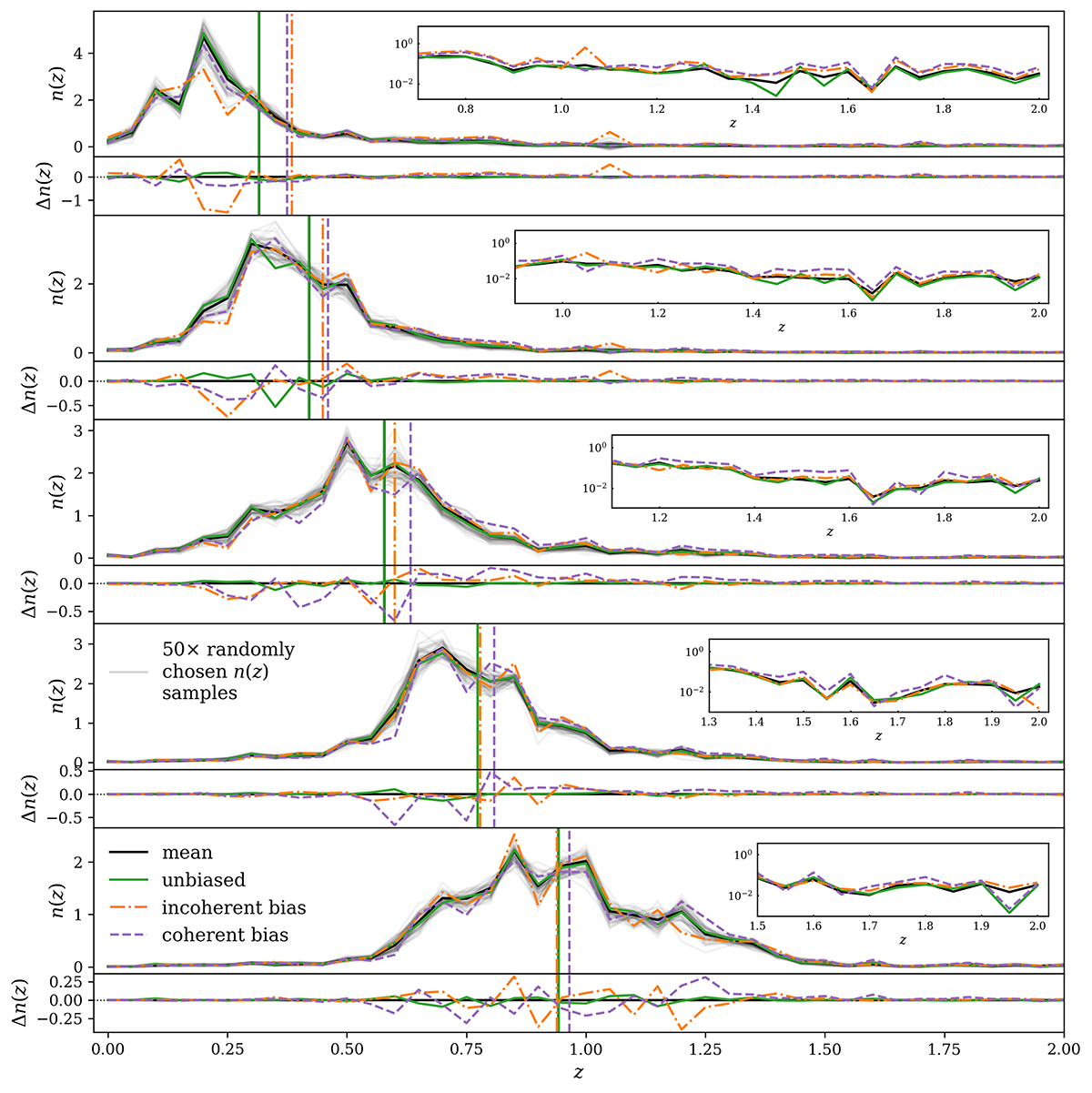Fig. 4.

Download original image
Five-bin stage III photometric redshift distributions employed in our forecasts, with alternating panels showing the distribution ni(z) of bin i and its difference Δni(z) = ni(z)−Ni(z) with respect to the ‘mean’ distribution Ni(z). Black curves in each panel correspond to the mean distribution N(z), taken as the final, public KiDS+VIKING-450 estimate (Hildebrandt et al. 2020; Wright et al. 2019). As described in Sect. 3.1.1, we assume a multivariate Gaussian distribution described by the mean N(z) and covariance Σn(z) (Fig. 3) to generate 45 000 sample redshift distributions, a random 50 of which are shown in n(z) panels as faint grey curves. After discarding the 80% of samples with negative n(z) values, the tomographic mean distance metrics Δincoherent and Δcoherent (Eq. (3.1)) are used to select the most deviant (with respect to the mean N(z)) of the remaining samples: the ‘incoherently’ ![]() and ‘coherently’
and ‘coherently’ ![]() shifted distributions, shown in each panel as dash-dotted orange and dashed purple curves, respectively. The least deviant (in terms of Δincoherent) sample is also selected as the ‘unbiased’ distribution, given by green curves. Inset panels zoom in on the high-z tails of each tomographic distribution, revealing small deviations there with logarithmic y-axes.
shifted distributions, shown in each panel as dash-dotted orange and dashed purple curves, respectively. The least deviant (in terms of Δincoherent) sample is also selected as the ‘unbiased’ distribution, given by green curves. Inset panels zoom in on the high-z tails of each tomographic distribution, revealing small deviations there with logarithmic y-axes.
Current usage metrics show cumulative count of Article Views (full-text article views including HTML views, PDF and ePub downloads, according to the available data) and Abstracts Views on Vision4Press platform.
Data correspond to usage on the plateform after 2015. The current usage metrics is available 48-96 hours after online publication and is updated daily on week days.
Initial download of the metrics may take a while.


